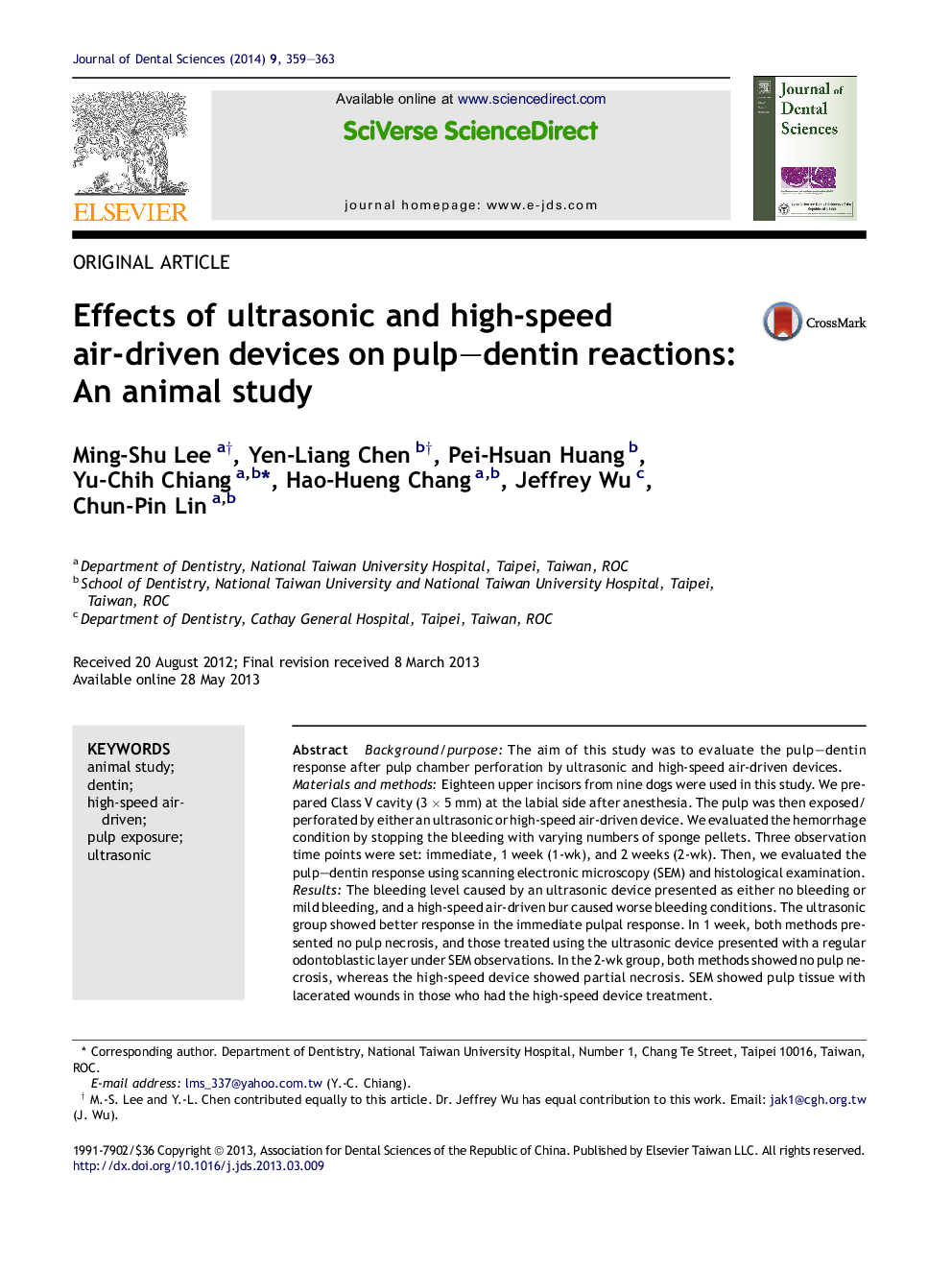| Article ID | Journal | Published Year | Pages | File Type |
|---|---|---|---|---|
| 3144731 | Journal of Dental Sciences | 2014 | 5 Pages |
Background/purposeThe aim of this study was to evaluate the pulp–dentin response after pulp chamber perforation by ultrasonic and high-speed air-driven devices.Materials and methodsEighteen upper incisors from nine dogs were used in this study. We prepared Class V cavity (3 × 5 mm) at the labial side after anesthesia. The pulp was then exposed/perforated by either an ultrasonic or high-speed air-driven device. We evaluated the hemorrhage condition by stopping the bleeding with varying numbers of sponge pellets. Three observation time points were set: immediate, 1 week (1-wk), and 2 weeks (2-wk). Then, we evaluated the pulp–dentin response using scanning electronic microscopy (SEM) and histological examination.ResultsThe bleeding level caused by an ultrasonic device presented as either no bleeding or mild bleeding, and a high-speed air-driven bur caused worse bleeding conditions. The ultrasonic group showed better response in the immediate pulpal response. In 1 week, both methods presented no pulp necrosis, and those treated using the ultrasonic device presented with a regular odontoblastic layer under SEM observations. In the 2-wk group, both methods showed no pulp necrosis, whereas the high-speed device showed partial necrosis. SEM showed pulp tissue with lacerated wounds in those who had the high-speed device treatment.ConclusionWe conclude that the ultrasonic device causes less damage to the dental pulp tissue in comparison with the high-speed air-driven bur. Moreover, we expect that the ultrasonic device can be applied to vital pulp therapy—such as direct pulp capping, pulptotomy, or pulpectomy—due to its safe approach.
